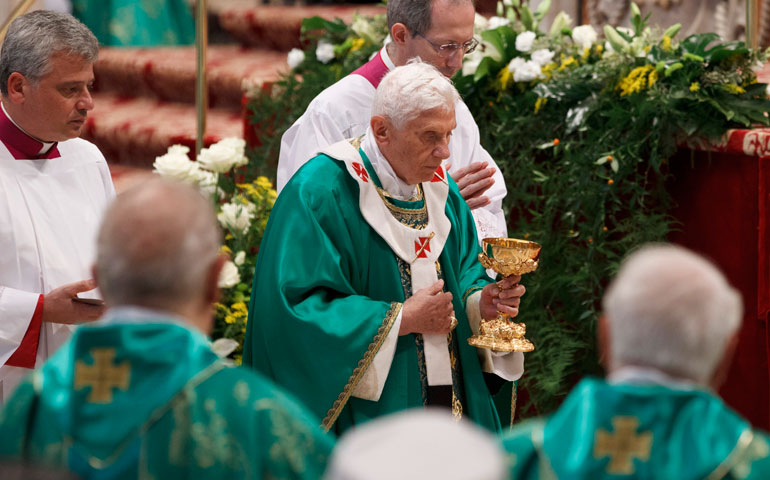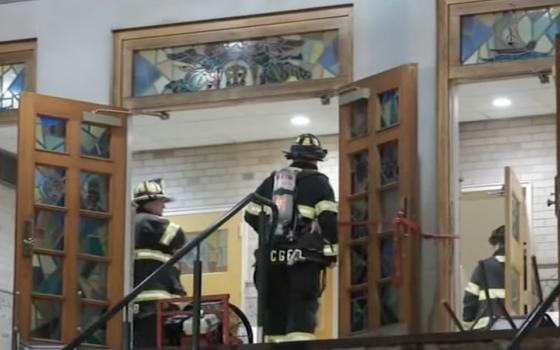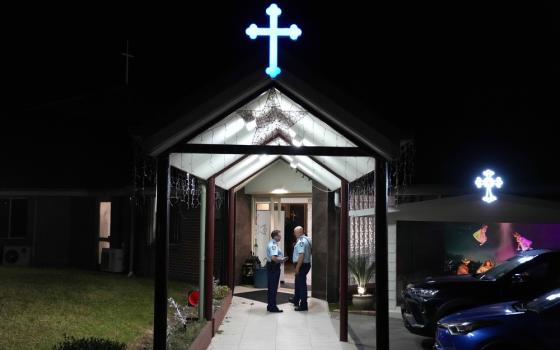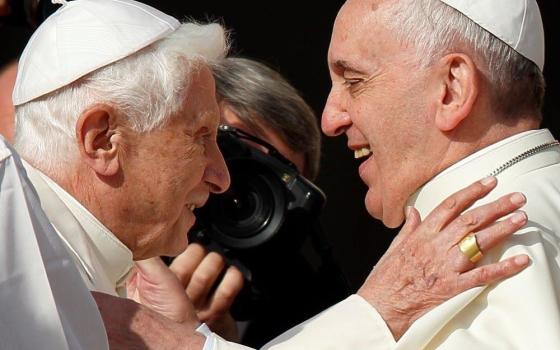
Synods of Bishops rarely produce earthquakes, but they can bring forces percolating in the church, especially at the leadership level, to the surface. In the wake of an Oct. 7-28 synod dedicated to new evangelization, three points seem crystal clear about Catholicism in the early 21st century:
- "New evangelization," defined as outreach "to those who have become distant from the church," has become the premier Catholic buzzword, and no initiative is likely to have legs unless bundled as part of that project. In broad strokes, the idea is a transition from maintenance to mission -- from keeping the machinery of the church in good working order, to reviving its missionary energies.
- Despite applauding new movements, small Christian communities and various other groups, bishops aren't ready to throw in the towel on the parish as the basic building block of Catholic life. Instead, they want parishes to flex some missionary muscle.
- Aside from the usual laments over secularization, there's also palpable alarm among church leaders over Islam. Their desire seems to be for an approach that avoids histrionics and a "clash of civilizations," but also affords a more robust capacity to push back against perceived violations of religious freedom -- especially where Christians are on the firing line.
A synod is a gathering of roughly 300 bishops, leaders of religious orders and other notables to advise the pope. This was the 25th synod since the gatherings began in 1967.
Pope John Paul II popularized the idea of a "new evangelization," and Pope Benedict XVI has made it his highest internal priority. The synod offered proof that bishops have gotten the memo; the 58 propositions they adopted at the end include calls for creating departments of new evangelization at Catholic universities, formation centers for new evangelization in dioceses, and commissions for new evangelization within their own conferences.
The bottom line, according to those propositions, is to call "every member of the church to a renewal of faith" as well as "an actual effort to share it" -- the key word, presumably, being "actual."
On background, participants said the push responds to perceptions that over the last half-century or so, Catholicism has become caught up in a series of internal debates, in administering institutions, and in promoting good causes, often at the expense of explicit missionary outreach.
There is some empirical evidence to support that impression. A 2008 study by the Pew Forum, for instance, found that the Catholic church in the United States retains a higher percentage of its childhood members into adulthood than any other Christian denomination, but has a significantly lower rate of attracting new members. Protestants in American gain three new members for every four they lose, according to the Pew data, while Catholicism attracts only one for every four defections.
The synod's final message asserted that the church's core business must be "leading the men and women of our time to Jesus."
In terms of how to do that, the synod endorsed a whole raft of ideas, from casting a spotlight on the church's social doctrine and works of charity, to asking dioceses to have at least one site where individual confession is always available. Calls for a renewed emphasis on the family and youth and for embracing social media were frequent.
Perhaps the signature notion, however, was injecting a new missionary spirit into parishes -- described, in an image from Pope John XXIII, as the "village fountain" of the church. Among other things, proposition 44 calls on parishes to organize personal visits to all Catholic families in the area, inviting them to become more active.
Heading into the synod, it seemed a foregone conclusion that secularism would be a major preoccupation, and that was indeed the case. In his opening speech, Cardinal Donald Wuerl of Washington, D.C., who served as general secretary, decried a "tsunami of secular influence" against which the church's message must swim.
More surprising, perhaps, was another perceived challenge to evangelization that surfaced time and again: Islam.
The lid was ripped off the subject on Oct. 13, when Ghanaian Cardinal Peter Turkson, president of the Pontifical Council for Justice and Peace, showed a seven-minute film titled "Muslim Demographics." The video, which created an Internet sensation in 2009, offers alarmist projections of a Muslim conquest of the West fueled by immigration and high birth rates.
Many of the film's statistical claims have been debunked, and in the wake of protests from the synod floor, Turkson later apologized, saying it had not been his intention to "call Christians to arms."
Several participants said that however dubious the video, it nevertheless prompted a vigorous discussion about Islam. Three points in particular surfaced:
- The rise of Islamic-tinged governments is raising worries about religious freedom, and not just in the hotspots gripped by the Arab Spring. Bishop Jean-Baptiste Tiama of Sikasso, Mali, reported that an Islamist movement in his African nation "occupies two-thirds of the country and threatens democracy and the existence of other religions."
- There was considerable talk about Islamic proselytism, with some bishops frankly declaring that in their parts of the world, they're being out-hustled and outspent by Muslim missionaries.
- Bishops expressed anxiety for Muslim converts to Christianity -- who, according to several participants, are not as rare as one might think, but who are compelled to live a catacomb existence because of both de jure and de facto recrimination.
These concerns were part of the backdrop to proposition 16, which says the synod stands "in solidarity with our brothers and sisters, in different parts of the world, who are suffering from lack of religious freedom and even persecution."
To be sure, that wasn't just a reference to problems with Islam. For instance, a letter was read to the synod from a Chinese bishop unable to attend because of government-imposed restrictions, policies that Cardinal John Tong Hon of Hong Kong described during a news conference as "pitiful."
In the same proposition, the bishops proposed that Benedict create "a commission of church leaders ... to address attacks on religious liberty, and to obtain accurate information for public witness to the fundamental right to religious freedom and freedom of conscience."
Cardinal George Pell of Sydney, one of the backers of the idea, told NCR that whatever advocacy this body pursues "has to be done with sensitivity, because we don't want to provoke a new Thirty Years' War ... but it should be done."
In a synod dedicated to relighting the church's missionary fires, the final message identified two core tests for the "authenticity" of that effort.
The first is contemplation, meaning the capacity for "a deep silence that receives the unique saving word like a womb."
The second is a determination to see "the face of the poor."
"Placing ourselves side by side with those who are wounded by life is not only a social exercise," the message said. "Above all, it's a spiritual act, because it is Christ's face that shines in the face of the poor."
In keeping with standard practice, Benedict is expected to produce a document, known as an "apostolic exhortation," offering directions based on the synod's results. Generally, it takes a year or more for the document to appear.
[John L. Allen Jr. is NCR senior correspondent. His email address is jallen@ncronline.org.]




